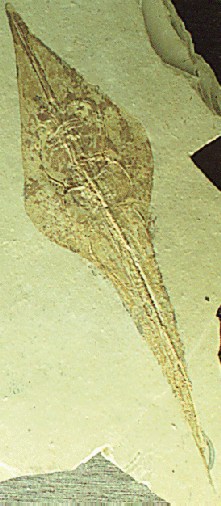
Members of the Chondrichthyes all lack true bone and have a skeleton made of cartilage (the flexible material you can feel in your nose and ears). Only their teeth, and sometimes their vertebrae, are calcified; this calcified cartilage has a different structure from that of true bone. Thus, preservation of the whole body of a cartilaginous fish only takes place under special conditions. This complete fossil rhinobatoid (guitarfish -- one of the earliest rays), Rhinobatis, shown on display at the Senckenberg Museum in Frankfurt, Germany, is from the Upper Cretaceous of Haqel, Lebanon, a place that has yielded many complete fossil sharks and rays.




